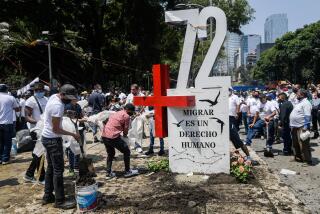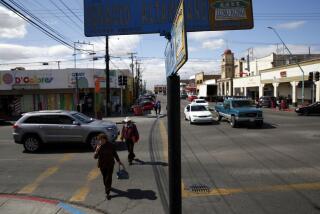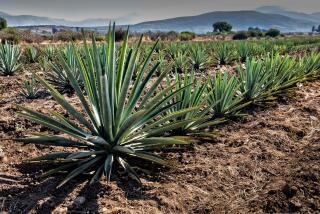Eleven coffins, all in a row: One of the worst of Mexico’s earthquake tragedies unfolded at the church in Atzala
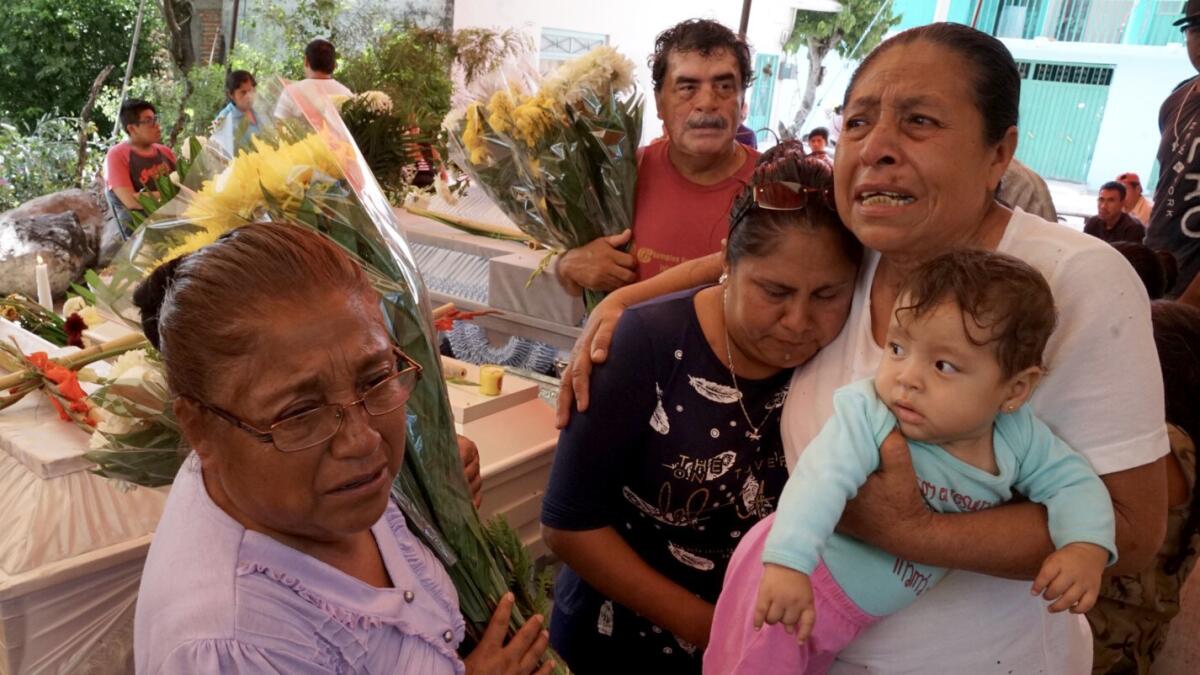
Reporting from Atzala, Mexico — It was supposed to be a joyous occasion, the baptism of a baby girl in this sweltering sugar-cane hub south of Mexico City.
But the celebration at Santiago the Apostle Catholic Church turned abruptly tragic Tuesday when a massive earthquake rocked violently through the main square.
The colonial-style church shuddered, and chunks of masonry crashed to the ground. Eleven people were killed.
Among the victims: Three-month-old Elideth Torres de Leon, who was to be baptized; her sister, Maria, 8; and the girls’ mother, Manuela de Leon Garcia, 27.
Much of the world’s attention has focused on Mexico City in the aftermath of the 7.1 earthquake, which killed at least 230 people and left thousands across central Mexico homeless. Here in Atzala, an isolated town of 1,200 that subsists mainly off agriculture and money sent home by those who’ve gone to work in the U.S., the impacts have been especially deep, and unforgettable.
The town lies just 20 miles from the epicenter of Tuesday’s quake, in neighboring Morelos state.The death toll at the church was among the highest number of casualties recorded anywhere in the country in a single venue.
The coffins of the 11 people killed in the church collapse were lined up together on Wednesday as stunned friends, relatives and townsfolk said goodbye — the baptism had instead become a funeral Mass.
Some were bidding final farewells to multiple relatives or neighbors, people who had been essential parts of their lives for years, sometimes decades. There was a general sense of disbelief that they had been taken away so suddenly.
“I am in profound pain. I am shattered,” said Graciano Villanueva Perez, 73, who lost six relatives — his wife, sister, daughter, son-in-law and two grandchildren, all of whom were attending the baptism. “I don’t know what to say,” he added, drifting away to the comfort of kin, his head bowed. He had been at home resting when the quake hit.
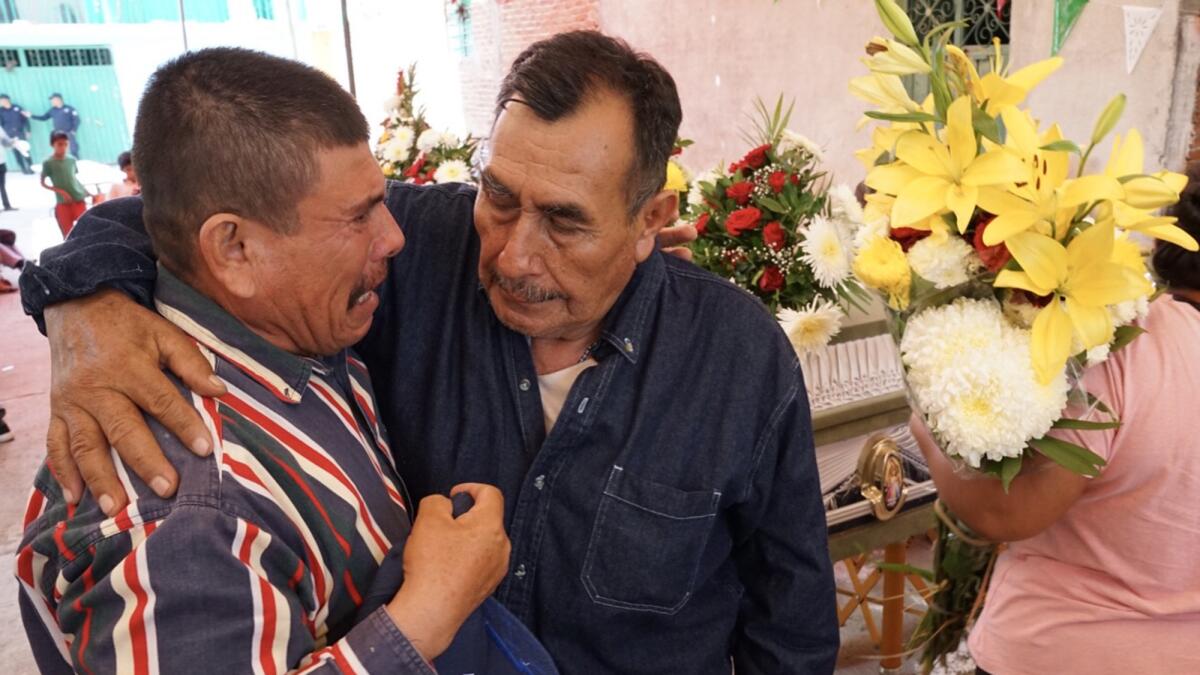
His relative, Facundo Flores Nolasco, 42, also lost six loved ones: his wife, mother, brother, daughter-in-law, a niece and a nephew. He had been returning from his fields on a bicycle with others when the quake struck.
“I’ve been through other earthquakes, but never this strong,” said Flores, a hulking man who once toiled in Colorado as an undocumented worker. “We had to get down from the bikes and wait for the shaking to end.”
When Flores returned to town, someone informed him what had happened at the church. He rushed to the hospital, but most of his relatives hadn’t lived long enough to be taken there. Still, in the midst of his losses, Flores has some hope: His 21-year-old daughter, Maria de Jesus, suffered a broken leg and internal injuries but is expected to survive.
“One never expects such a thing,” Flores murmured.
Comforting him were his two daughters, Matilda and Annabel, who sat on metal chairs set up for the wake. Nearby, people arranged flowers and palms to be placed by the coffins.

A baptism at Santiago the Apostle Catholic Church in Atzala turned abruptly tragic Tuesday when a massive earthquake rocked violently through the main square. Eleven people were killed.
With the church reduced to rubble, the wake and funeral service were held beneath a red-and-white tarp on a small side street. The 11 closed coffins, of different shapes and sizes, bore pieces of white tape with the first names of the deceased and stood side-by-side on metal stands.
Those gathered sat and stared into space, or chatted. Some shared soft drinks. The crowd was subdued. Some officials stopped by to pay respects.
The entire town seemed to be in mourning. Well-wishers hugged relatives of the dead, gave their condolences and offered flowers, which were placed in pots at the foot of the coffins. Burning candles stood by the flowers.
“These were all people we knew — this is a small town,” said Carmen Moran, who was among the mourners. “That was Aurelia,” she said, pointing at a coffin adorned in white frills.
Moran then gestured to other caskets. “That was Fidelia. That was Florencia. And Azcucena, the daughter of ….” Her voice trailed off.
Next to where the funeral was held, a poster plastered to a wall offered shipping services to and from the United States and Mexico. The company was based in the New York borough of Queens, where many residents of Atzala have gone to work over the years. It offered the best prices on cross-border shipments.
A few blocks away, residents gathered to gawk at the ruins of Santiago the Apostle Church. Deep fissures marred its mustard-colored facade. One of its bell towers had tumbled into the plaza in front; the other was half-destroyed. Inside, massive chunks of masonry from the roof covered the floor. Some peering in from the street said they couldn’t help but imagine what had happened a day earlier — the shock and panic.
Outside the church, rubble and twisted trees and branches littered the once-tranquil space facing the church. Yellow police tape cordoned the area off, with police officers standing guard.
City officials cautioned of the danger that the unstable structure could come tumbling the rest of the way down.
A bulldozer gathered up debris and placed it into a dump truck as residents watched.
“We’ve never had something like this here,” said Marisela Rodriguez, 45, who runs a shop down the street from the church. “This was terrible tragedy, but thank God it did not happen … on Sunday. The church is always packed then. Practically the whole town comes out. There would have been so many more killed.”
A priest said some last prayers over the assembled coffins beneath the canopy. A few blocks away, at the town cemetery, workers had dug three holes where the bodies would be placed.
All is ready, a cemetery worker assured those assembled.
“The human toll — that’s the hard part,” said Giovanni Sanchez, 31, who once worked as a busboy in the Bronx, but returned to be with his family here. “The church can always be replaced. But not the people. They are gone now forever.”
twitter: @mcdneville
ALSO
How to help Mexico’s earthquake victims
Death toll from Mexico’s earthquake climbs to 230 as frantic search continues for survivors
Could your building collapse in a major L.A. earthquake? Look up your address on these databases
More to Read
Sign up for Essential California
The most important California stories and recommendations in your inbox every morning.
You may occasionally receive promotional content from the Los Angeles Times.
